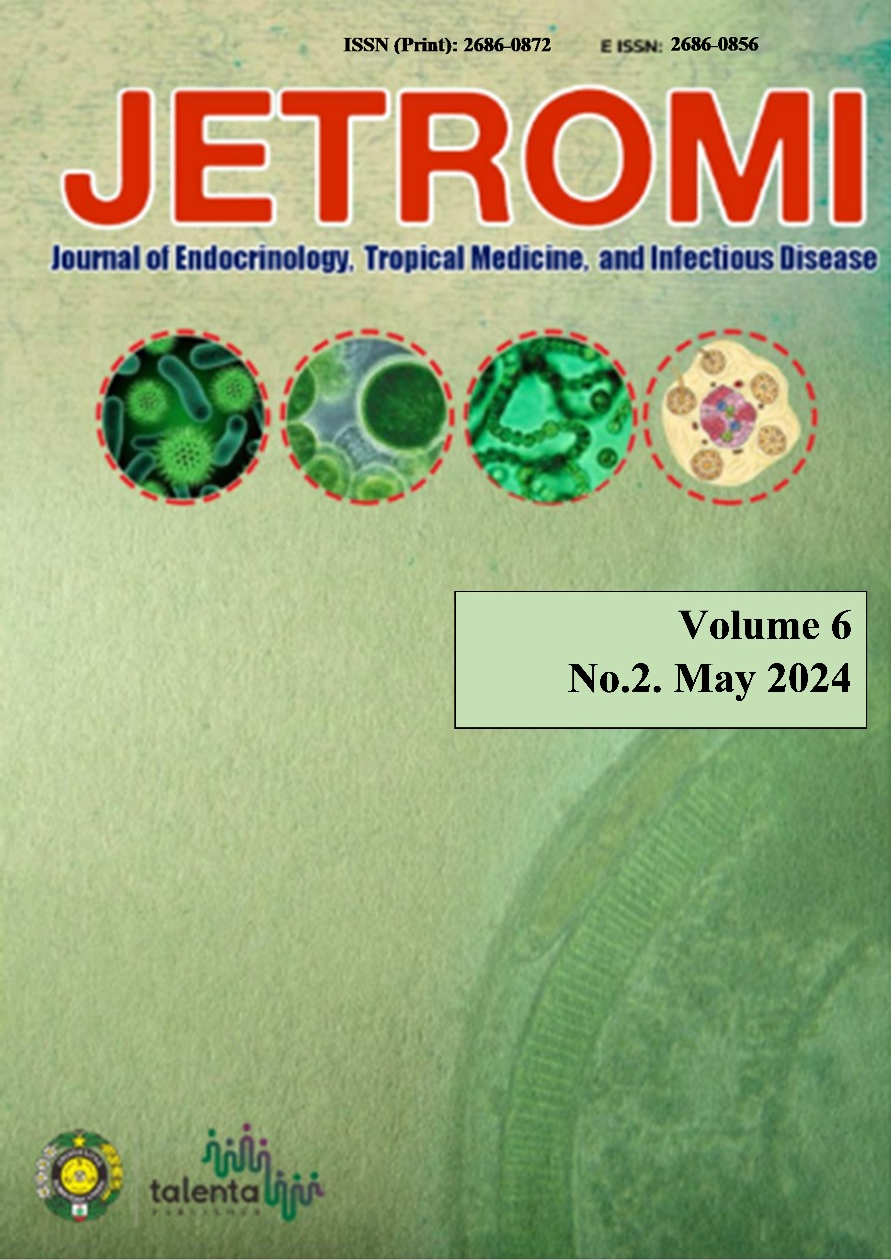Identification of Mites in Wild Rats in Simpang Limun Traditional Wet Market Area, Medan - Indonesia
DOI:
https://doi.org/10.32734/jetromi.v6i2.14918Keywords:
wild rats, mites, ZoonosesAbstract
Background:Â Among human diseases are infectious diseases transmitted by animals to humans, called zoonoses. Rats carry ectoparasites that act as biological vectors in the transmission of zoonoses. Mites are ectoparasites of rats that cause various zoonoses, namely murine typhus, rat mite dermatitis, and others. The study aims to identify species of wild rats in the study area based on their morphology and presentation of mite-infected rats and mite species in wild rats in Simpang Limun traditional wet market in Medan, Indonesia.
Methods: This cross-sectional study used a purposive sampling technique. Primary data were collected in the Simpang Limun traditional wet market area of Medan, namely in the first area; M. Nawi Harahap Street, and the second area; Kemiri I Street. Every afternoon for four consecutive days, ten baited rat traps were deployed in each area. The captured rats were anesthetized, identified, and examined for mites by combing and then identified under a microscope.
Results: From 65 total wild rat samples, the majority of species found was Rattus tanezumi 60 (92.3%), followed by Rattus norvegicus 5 (7.7%). The identified mite species were Laelaps echidninus (84.5%) and Laelaps nuttalli (15.5%).
Conclusion: Nearly all of the wild rats found were of Rattus tanezumab species, and the most common mite species identified was Laelaps echinus in Medan's Simpang Limun traditional wet market area. This has a significant medical impact, resulting in increased potential for zoonosis transmission and indirectly to the surrounding residents in Medan's Simpang Limun traditional wet market area.
Downloads
Downloads
Published
Issue
Section
License
Copyright (c) 2024 Journal of Endocrinology, Tropical Medicine, and Infectious Disease (JETROMI)

This work is licensed under a Creative Commons Attribution-NonCommercial-ShareAlike 4.0 International License.
The Authors submitting a manuscript do so on the understanding that if accepted for publication, copyright of the article shall be assigned to Journal of Endocrinology, Tropical Medicine and Infectious Diseases (JETROMI).
Copyright encompasses exclusive rights to reproduce and deliver the article in all form and media. The reproduction of any part of this journal, its storage in databases and its transmission by any form or media, will be allowed only with a written permission from Journal of Endocrinology, Tropical Medicine and Infectious Diseases (JETROMI).








